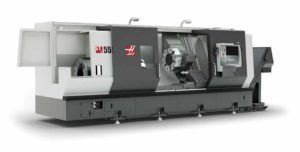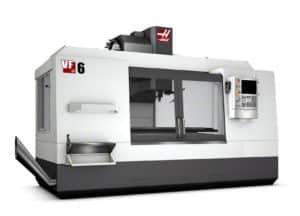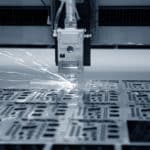The Basics of CNC machine service
You probably aren’t aware that anything you touch, use or own that is made of metal or other solid material went through some type of CNC machine. Most of the components of a smart phone, for instance, once upon a time existed as a solid piece of metal, plastic, or glass that had to be cut precisely to become the case or the touchscreen. The same goes for cars, household appliances, airplanes, signages, medical equipment, toys, and so on. Having such an impact on people’s daily lives, it is but fitting to know more about it. Here are the basics of CNC machining service.
What is a CNC machine?


CNC stands for Computer Numerical Control, and it is the technology that automatically controls a machine for shaping and cutting materials using a computer program. CNC evolved from the need of manufacturers to produce a large number of identical shaped or cut items without the need for constant human attention. A good example is a lathe machine, which many people have in their garages. They can use the lathe machine to cut metal or wood manually. As such it is not a CNC machine. However, if you automate the process using a computer, then it becomes a CNC machine.
A brief CNC history
Back in the days before computers were widely used, you could still automate a machine tool with the use of other systems. These were referred to as simply NC machines, and the earliest ones commercially available in the 1950s used punched tape to control how a machine made “parts.” They used g-code to define the parts programs, but it wasn’t until the 1960s that a standard g-code language became available.
It was also during this time that computer aided design began to replace manual draftsmanship, and minicomputers were available to make CNC technology more affordable and powerful. However, these machines were so expensive that only the biggest companies could afford them. As computers became smaller and more advanced, however, it became possible for small companies to run CNC technology. Today, individuals can even make their own for home use.
Basic components
Any CNC machine is composed of the machine itself and the computer control module which stores and reads programs. The computer runs G and M codes, which is the standard programming language. Modern CNC machines are often fully encased to ensure the safety of any personnel within its effective range. The person operating the machine is the CNC operator, and must be fully trained and highly skilled. The operator must be able to read and interpret complex and technical specifications and drawings. Once the CNC is set in motion, however, the operator need not be in attendance at all times.
Types of CNC machines
Any machining tool is potentially a CNC machine. This includes lathes, milling machines, multi-axis spindles, and wire electrical discharge machines. There are two basic types based on the cutting tool spindle orientation: vertical and horizontal. Here are the most common
Lathe machines
Lathes are very useful in making parts in any scenario. It uses a spindle to rotate the material through a fixed cutting tool. CNC lathes are particularly useful for quickly creating symmetrical parts on the X or Y axis, although some models can do more advanced work with more axes.
Milling machines
A milling machine, on the other hand, the cutting tool moves in response to the program instead of the material. Standard mills can cut in three axes, X, Y and Z, allowing the machine to cut to various depths and locations. However, there are now CNC milling machines that can cut up to 6 axes. These are often used for tapping, drilling, face milling, shoulder milling, and turning. Some people call CNC mills “vertical machining centers.”
A variation on a CNC milling machine is a CNC router, which uses a gantry framework, and ir is usually used to cut wood.
Other types of CNC machines include:
-
- Plasma cutters
-
- Embroidery machines
-
- Wire bending machines
-
- Surface grinders
-
- Cylindrical grinders
- Benefits of CNC
The most obvious benefit of CNC is the ability to set and forget. Most CNC machines run with minimal supervision, reducing labor costs and increasing worker productivity. Automation reduces the incidence of human error in manufacturing, and provides a precise production schedule. Another benefit is consistency and accuracy in repetitive work with no discernible limit to the duplication of results. In other words, once the program is running, the results will be identical.
CNC also allows for more flexibility for the machining tools. It is a simple matter of using a different program to set the machine to make different parts. It is also simpler to make modifications to the program after each run. Finally, CNC machines are easy to set up and use, which is perfect for just-in-time production.
Conclusion
The needs of mass production to meet growing demand has led to the development of many technologies to improve production. The advancement of computer technology has made it much easier to faster to incorporate old and new technologies for the benefit of consumers. CNC machining service is simply an automated way to create parts in precise and consistent ways. Back in the day, it would have been very expensive to commission customized work. However, that is no longer the case. If you have a need for CNC machining service for any reason, you are likely to find one in your area with experienced and skilled operators capable of performing any request at affordable rates.
Related articles across the web






